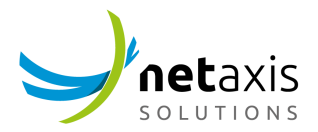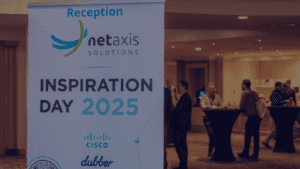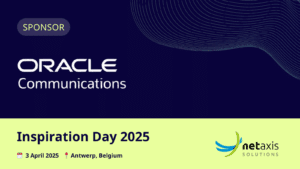How to guide to Ofcom CLI presentation changes in the UK
The ultimate aim is to reduce the volume of unwanted nuisance or fraudulent calls received by UK consumers and businesses. The following interpretation of Ofcom’s guidance should be considered with this aim in mind so far as it is technically and economically feasible.
Calls to emergency services should never be blocked due to missing or malformed CLI, Ofcom and industry agree that ensuring emergency calls reach the emergency handling authority every time takes priority over validating data passed with a call.
Overview of Ofcom rule changes
On first October 2018 Ofcom are introducing new rules concerning CLI presentation. This condition requires communications providers to provide Calling Line Identification facilities by default wherever technically feasible and economically viable, so that call recipients can identify the person calling them and choose whether or not to accept the call.
To assist with the identification of callers and reduce the incidence of nuisance calls, all communications providers should ensure that any telephone number associated with a call at the network level and/or presented to a call recipient is a valid, diallable number which enables the calling party to be identified, so that the call recipient can make a return call to that person.
This is a hugely welcome step for consumers who will be less likely to have calls from spoofed CLIs arming them with decision making powers as to whether to answer a call or not.
Overview of network and presentation CLI
The Network Number is mandatory, it must unambiguously identify the origin of the call and must not be a premium rate service or one which generates excessive revenue. Where the origin is outside of UK the Network Number should identify the point of ingress in the UK. This number should not be changed by other CPs in the call path (except where replaced with the new 0879 range detailed below). The network number only needs to be dialable if there is no separate Presentation Number.
A separate Presentation Number is optional and is designed to help the called party identify the caller and be able to return a call. If no Presentation Number is provided the Network Number will be displayed to the called party instead (subject to privacy restrictions). Again the number must not be premium rate service or one which generates excessive revenue. The call originator must have authority to use the presentation number and service providers must give them the choice to display the number or withhold it.
Service provider types
Call originators
The originating service provider must require their users, by way of a contractual agreement, to only use network and presentation numbers that they have the right to use. For example it may be a number that you have assigned them or that you have imported on their behalf.
The presentation number must be from a range declared available for allocation by Ofcom, it must be working and able to accept a return call. It should also uniquely identify the caller and must not be a premium rate number or a high cost non geographic range. If no such presentation number is provided with the call then the network number will normally be used, therefore the same rules must be applied to the network number in those circumstances.
Originating service providers should ensure that the network number provided is directly associated with the client’s line, service or account. The network number is used to track the origin of a call. Failure to send a legitimate network number may result in calls being blocked or a network number being inserted for by a transit network.
As well as the integrity of the CLI itself, privacy controls are also of great importance. If an originating service provider has reason to believe that the upstream carrier or service provider will not handle a withheld flag correctly they should not pass the CLI if it’s been withheld by the user.
Ofcom have made it clear that a misleading CLI or one used for revenue generation will be considered misuse and investigated.
Wholesale networks/Transit providers
If a transit network is passed a call with an invalid, missing or suspicious CLI it must replace the number with one within the 0879 range allocated by Ofcom. This will help others in the call path identify that the call has originated from potentially unknown origins (e.g.International) and will be used to help terminating networks make routing decisions.
The 0879 number also assists networks to trace the call back along the call path to the source of the call within the UK. The 0879 number does not have to be dialable and a list of ranges allocated is available on the Ofcom website to assist with any queries relating to calls that include this number type.
Where a network number has been inserted it must be flagged as ‘unavailable’ by default so as not to pass it on to the called party.
Call terminators
The terminating network must take reasonable steps to stop calls with a malformed or suspicious CLI from reaching the called party, this may include blocking calls or pushing calls straight to voicemail. ITSPA have interpreted current guidance to mean that the service provider delivering calls to the called party is best placed to make routing decisions of this nature due to their direct relationship with the user.
We anticipate that some users, particularly businesses, will wish to receive all calls regardless while other users will require stricter control over calls received. We recommend that ITSPA members document their processes for establishing the requirements of their customers in this regard so they can demonstrate compliance with the Ofcom guidelines.
The terminating provider must not alter the network number that was provided by the call originator or transit network, to do so would modify the integrity of the call handling to this point and be counter-productive.
Terminating networks are expected to carry out reasonable checks on any presentation number received, including length of number inserted and status when compared to the National Numbering Plan maintained by Ofcom. The current guidance from Ofcom does recognise that it is not technically feasible to verify ownership or allocation of individual numbers at this stage but checks such as number of digits or format may be appropriate for many providers to satisfy this requirement.
If anonymous call reject is applied by the called party the terminating network must sent back a suitable indicator* to inform the caller that the reason for the call failing was due to call barring or screening to avoid recurring attempts to place the call.
Blocking or stopping calls
All Service Providers and Transit Networks that may block, divert or prevent calls progressing due to malformed or suspicious CLI must have a process in place to review their decisions and handle disputes. The dispute process should be published on the Service Providers website and advertised internally to ensure prompt action in the event of legitimate calls being blocked inadvertently.
*Specific details of indicator may be included here if we resolve in time
Specific call processing example/guidelines
To be compliant with Ofcom General Conditions UK service providers need to change the way that calls are processed along the following lines:
- If the invite does not have a P-Asserted-Identity and is NOT To the Emergency Services 999/112 then REJECT the Invite with 403 and add X-Reason: P-Asserted-Identity Validation Failure.
- If the Invite has a P-Asserted-Identity starting +44 then check against the Routing Plan Ofcom_Ranges to ensure that the CLI is within a range that has been allocated and has sufficient digits to comply with the plan and whether the CLI is within a range allocated to or hosted by (which includes ported numbers) the CP.
- If the P-Asserted header complies with the Routing Plan Ofcom_Ranges and is within a range allocated to or hosted by (which includes ported numbers) the CP, Process the call as per the Customer Assigned Routing Plan honouring the privacy settings of the original Invite.
- If the P-Asserted header complies with the Routing Plan Ofcom_Ranges but is NOT within a range allocated to or hosted by (which includes ported numbers) the CP, Process the call as per the Customer Assigned Routing Plan substituting the original From Header with the values of the original received P-Asserted-Identity and replacing the P-Asserted-Identity with the customer specific 0879 CLI whilst honouring the privacy settings of the original Invite.
- If the P-Asserted header does not comply with Routing Plan Ofcom_Ranges or the number of digits is not sufficient to comply with the plan then REJECT the invite with 403 and add X-Reason: CLI Is NOT Compliant With Ofcom Numbering Plan.
- If the Invite has a P-Asserted-Identity starting +1 to +43 or +45 to +998 and has sufficient digits to be a valid call (to be defined) then Process the call as per the Customer Assigned Routing Plan
- If the Invite has a P-Asserted-Identity starting +1 to +43 or +45 to +998 and does not have sufficient digits to be a valid call (to be defined) then REJECT the invite with 403 and add X-Reason: CLI Appears To Be Malformed
Note the 403 response, aimed really the terminating party, has been included here in the absence of a suitable specific response code. This could well change but for the moment 403 does the job.
Free consultancy regarding Ofcom changes
Netaxis are happy to offer free of charge consultancy advice on this subject. Netaxis UK customers using our Session Routing Engine are able to easily handle these routing manipulations overcoming any technical feasibility issues at an economically sensible price point. For customer references by all means get in touch with Trefor Davies – tref@netaxis.solutions or 07957 904477.
More details of the required changes to call routing can be found on the Ofcom website.





